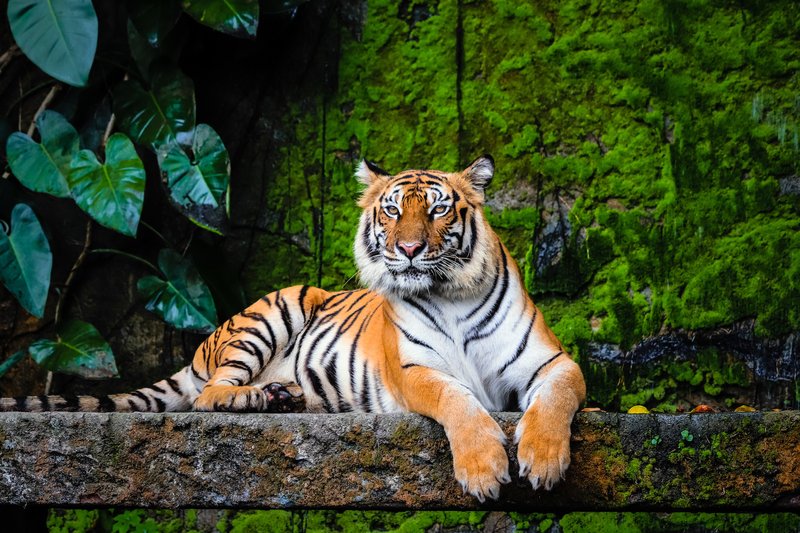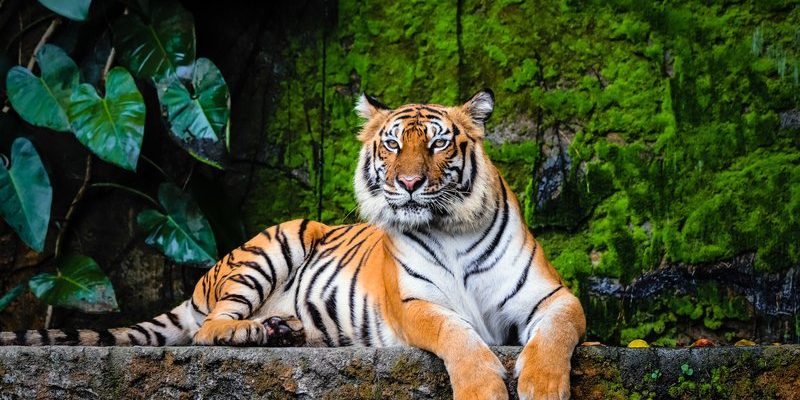
One of the most pressing questions we need to address is: Is the Bengal tiger endangered? The answer, unfortunately, is yes, and it’s more complicated than simply saying “they’re going extinct.” Let’s dig deeper into the world of Bengal tigers, explore the factors contributing to their endangerment, and discover what’s being done to protect them.
Understanding the Bengal Tiger
Bengal tigers, also known as *Panthera tigris tigris*, are primarily found in India, but they also inhabit Bangladesh, Nepal, and Bhutan. These majestic animals are the most numerous of all tiger subspecies, but that’s not saying much in a world where their populations have dwindled significantly. In fact, it’s estimated that only about 2,500 Bengal tigers remain in the wild today.
To put that in perspective, picture a big city. If every Bengal tiger left that city, it would only fill the seats of a large theater. With such a small population, the chances of encountering a Bengal tiger in the wild are growing slimmer each day. Their habitat is shrinking, making it harder for them to find food and roam freely as they once did.
These tigers are also a vital part of their ecosystem. As apex predators, they help maintain the balance of their environment. Without them, the populations of their prey, like deer and wild boar, could explode, leading to overgrazing and other environmental issues. So, losing Bengal tigers affects not just their kind but the entire ecosystem around them.
Why Are Bengal Tigers Endangered?
There are several major factors contributing to the endangerment of Bengal tigers. One of the biggest culprits is habitat loss. Urban development, agriculture, and human encroachment have cut into their territories, leaving these tigers with less space to roam and hunt.
Furthermore, deforestation poses a significant threat. Forests are being cleared at an alarming rate, which reduces the natural habitats necessary for tigers to thrive. Imagine a neighborhood where homes are constantly being torn down, leaving families with nowhere to live. That’s similar to what Bengal tigers are experiencing in their shrinking forests.
Another key issue is poaching. Tiger skins, bones, and other parts are highly valued in illegal wildlife trade. These products are often used in traditional medicine or as status symbols, driving hunters to kill tigers for profit. Even as awareness grows about the dangers of such practices, poaching remains a serious threat. It’s like trying to protect a priceless painting while people keep trying to steal it.
Current Population Status of Bengal Tigers
As of now, the estimated population of Bengal tigers in the wild is around 2,500 individuals. This number may sound shocking, but it’s crucial to understand that local conservation efforts have made a difference. In some areas, populations have stabilized or even increased due to active preservation work.
For instance, India is home to over 70% of the world’s Bengal tiger population. The country has established numerous national parks and wildlife reserves aimed at protecting these animals. Sites like the Sundarbans and Ranthambore National Park are crucial sanctuaries for Bengal tigers, offering them a safe environment to live and breed.
Despite these efforts, the numbers still remain critically low. Conservationists highlight the need for sustained efforts and funding to ensure these big cats don’t disappear entirely. It’s akin to tending to a delicate garden; without regular care and attention, it may wither away.
Conservation Efforts in Place
So, what’s being done to save these remarkable creatures? Conservation programs have sprung up worldwide, focusing on both protecting habitats and reducing human-tiger conflicts. Some initiatives train local communities to coexist with tigers rather than see them as threats.
One successful approach is establishing wildlife corridors. These are safe passages that allow tigers to move between fragmented habitats without danger from human activities. Think of it like building bridges to connect two sides of a river—these bridges help save lives and maintain the ecosystem’s balance.
Additionally, the Project Tiger initiative in India has made strides to protect Bengal tigers since its launch in 1973. The project focuses on habitat preservation, anti-poaching measures, and community education. It emphasizes the importance of protecting not just the tigers but the entire biodiversity of the regions where they live.
The Role of Education and Awareness
Raising awareness about the plight of Bengal tigers is essential in the fight against their endangerment. Education programs in schools and communities highlight why tigers are crucial for ecological balance and why protecting them matters.
By sharing stories of the tigers and their habitats, people can better appreciate these animals. For instance, children drawn in by the majesty of Bengal tigers may grow into adults who advocate for their protection. It’s like planting seeds of hope; with care and attention, they can grow into a movement for conservation.
Social media campaigns have also played a vital role in spreading the word. Viral videos and photos of tigers in their natural habitats help generate support for conservation efforts. When people connect emotionally with animals, they’re more likely to take action—whether it’s donating to conservation organizations or spreading awareness within their networks.
What Can You Do to Help?
You might be wondering how you can contribute to the conservation of Bengal tigers. The good news is that there are many ways you can make a difference, even from where you are.
Here are a few simple actions you can take:
- Educate Yourself: Learn about Bengal tigers and their ecosystems.
- Support Conservation Efforts: Consider donating to reputable wildlife organizations dedicated to tiger preservation.
- Spread the Word: Share information about Bengal tigers on social media or within your community.
- Advocate for Policy Change: Support policies that protect wildlife and natural habitats.
Every little bit helps. Even small contributions can lead to big changes in wildlife conservation.
The situation facing the Bengal tiger is a pressing and emotional challenge. These majestic animals are not just a part of our planet’s wildlife; they are an essential piece of our earth’s ecological puzzle. The fight against their endangerment is ongoing, needing everyone’s support and awareness.
By understanding more about their plight, supporting conservation efforts, and raising our voices, we can work towards ensuring future generations will marvel at Bengal tigers in their natural habitats. It’s a tough road ahead, but with collective effort, we can ensure that the roar of the Bengal tiger continues to echo through the jungles for years to come.

